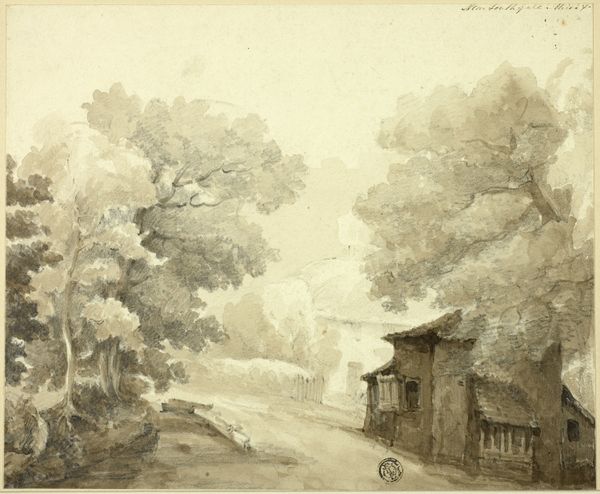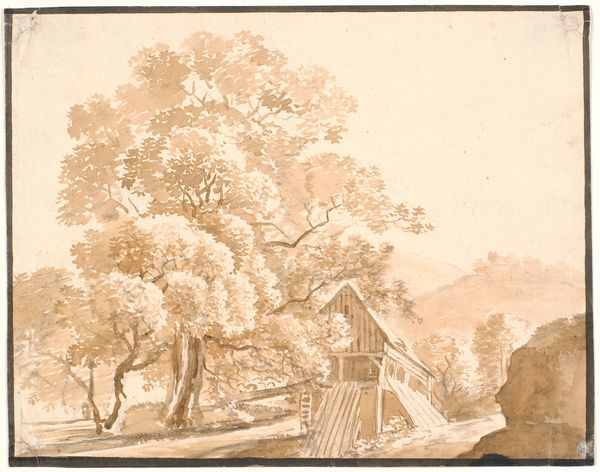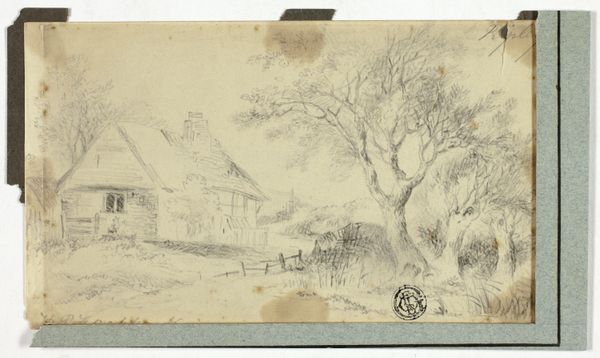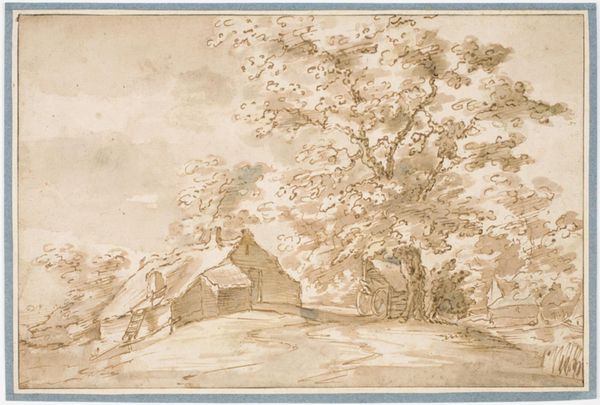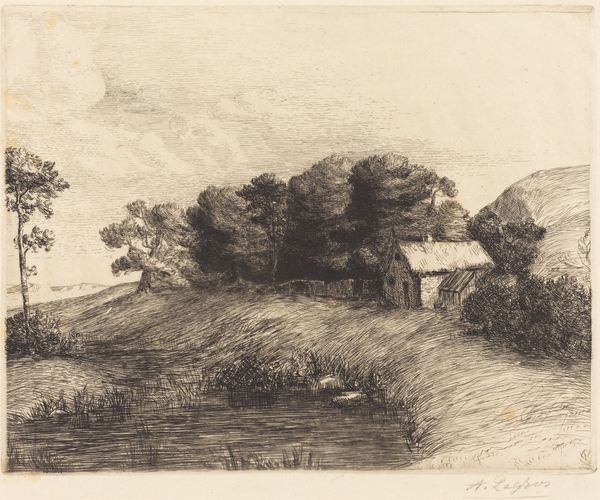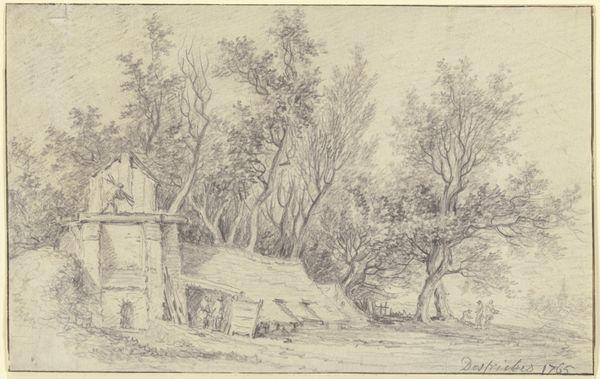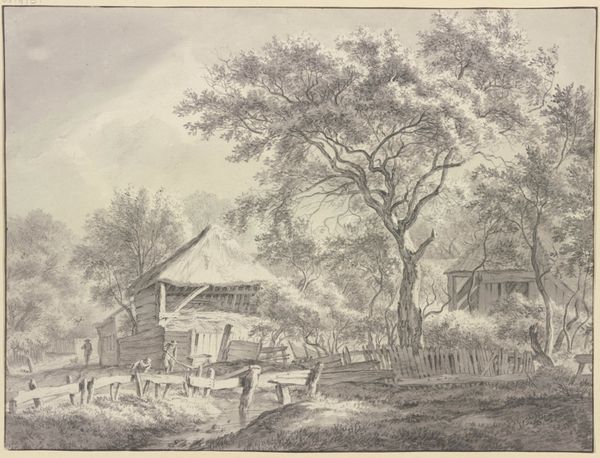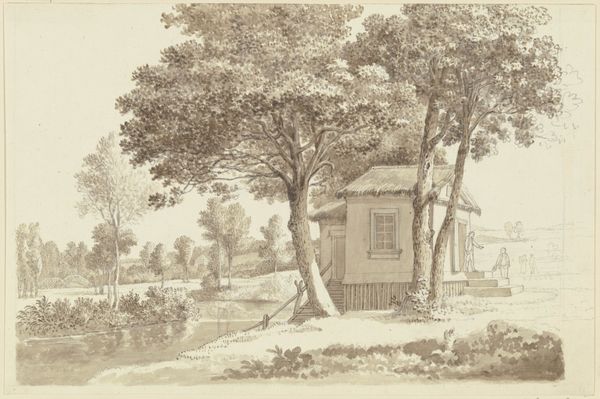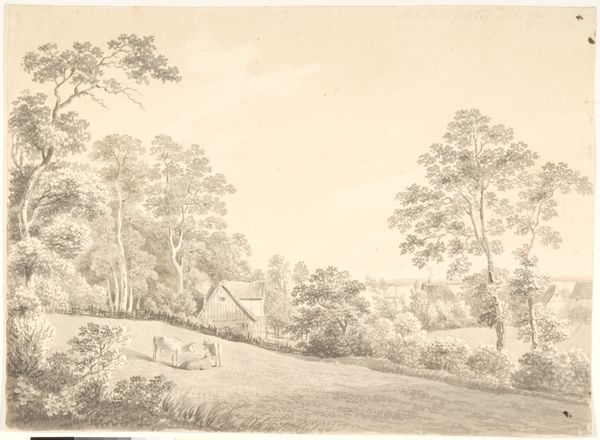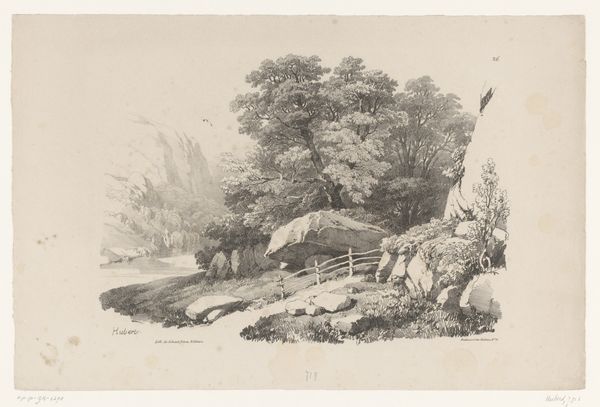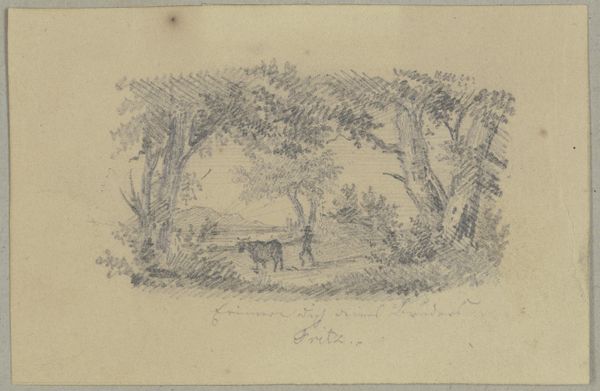
drawing, print, paper, ink, pencil, chalk, graphite
#
drawing
# print
#
landscape
#
etching
#
paper
#
ink
#
pencil
#
chalk
#
graphite
#
realism
Dimensions: 117 × 153 mm
Copyright: Public Domain
Curator: This is "At Crossington in Leicestershire," an etching from around 1800, by F. Smith. Look closely—it’s a delicate landscape rendering, executed in ink, graphite, chalk and pencil on paper. Editor: It feels incredibly pastoral. There's a soft, almost dreamlike quality to the way the buildings and trees are depicted; very easy on the eye with its subtle tonality. Curator: Indeed. Let's consider Smith’s chosen materials here. Etching is, after all, a printmaking technique inherently linked to reproduction. The original drawing would be reworked, copied. So what does this say about access to art in the early 19th century, particularly for scenes of rural life? Editor: I am much more arrested by the forms; the balance of the composition. Notice how the solid mass of the cottage anchors the piece, with the trees acting almost like framing devices to either side. Curator: And those trees! They are not just decorative; they're evidence of available resources. How easily and quickly would Smith have been able to acquire those raw materials. His social circumstances must certainly dictate access to them, which dictates this etching style Editor: You see evidence of that relationship in the etching's themes, but look closely at those thatched roofs. Their textures are almost sculptural through the precise strokes and detailing and, through composition and balance, give such gravity to an otherwise gentle piece. The light is gorgeous! Curator: It’s hard not to see it as a constructed vision of rural idyll, reflecting very specific societal tastes, and class relationships inherent at the time. What purpose does the landscape hold here? For whom was this ideal produced and why? Editor: But doesn't the manipulation of light, shadow, line contribute something independent of these constraints, of its original purpose. It expresses Smith’s sensibility, and invites us to see. Curator: Absolutely. The skill lies in embedding that personal vision into materials whose very acquisition is fraught. Editor: I see your point! What appears a purely aesthetic choice can have very real historical implications. Curator: Precisely. This subtle dance between artistry and materiality. Editor: Well, regardless, Smith gave us something to truly study.
Comments
No comments
Be the first to comment and join the conversation on the ultimate creative platform.
